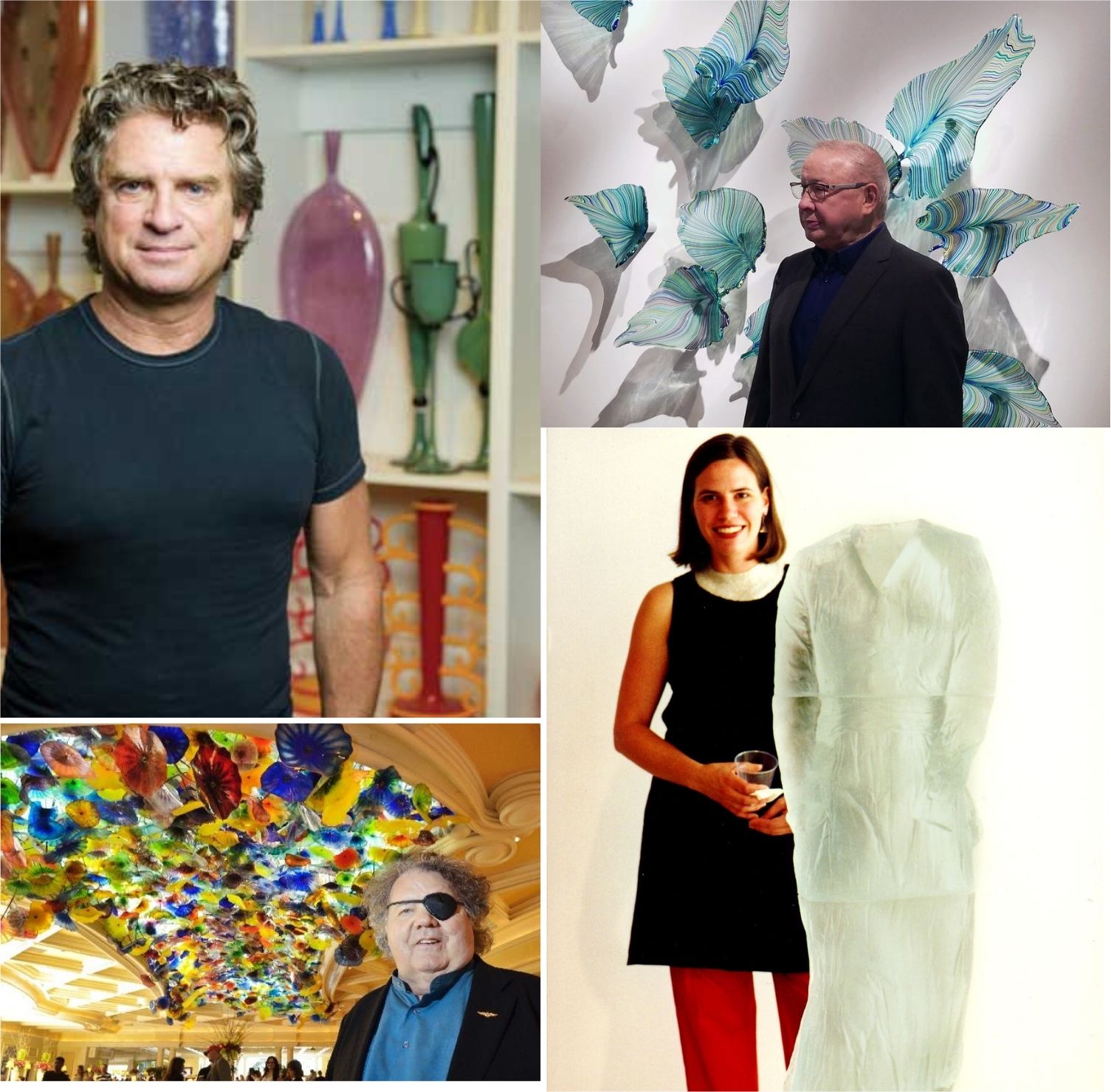Glassblowing Legends: Master Artisans Pushing Creative Boundaries
While glassblowing boasts centuries of tradition, it continues evolving through the visionary work of modern masters. These artists fuse classical techniques with imaginative new directions to expand glass’s creative potential. Their jaw-dropping sculptures, vessels, and installations redefine what can be achieved with glass. Exploring these masters’ achievements offers inspiration and appreciation for those advancing the medium.
Dale Chihuly – Pushing Scale and Color
Dale Chihuly spearheaded contemporary glass movement in the 1960s and remains one of the world’s best recognized glass artists. His expansive Seattle studio experiments with daring forms and vibrant colors, creating monumental chandeliers, towers, and environmental installations around the globe.
Chihuly explores chance and gravity in his work, using tools to manipulate blown shapes with exuberant organicism. His flowing forms and intense hues blur the line between decoration and fine art. Chihuly’s spectacle-like creations draw millions to exhibitions showcasing his mastery of color through glass.
Dante Marioni – Modernizing Classic Venetian Techniques
Hailing from a family of Venetian glassblowers, Dante Marioni preserves centuries-old traditions while adapting them to modern times. His work merges classic Venetian goblets, bowls, and platters with contemporary forms and aesthetics. Marioni masters signature Venetian methods like incalmo, which fuses separate blown pieces seamlessly together.
Based in Seattle, Marioni collaborates with top architects on monumental commissioned glass installations. His technical prowess and attention to quality resurrect vintage techniques, while his simplified designs attract new admirers to the finery of Venetian glassblowing.
Lino Tagliapietra – Maestro of Intricate Patterning
Esteemed Italian glass maestro Lino Tagliapietra has been blowing glass for over 75 years. His intricate work mixes exquisite clear glass with elaborate murrine and latticino patterns containing thousands of colors and canes. Every unique piece encapsulates astonishing technical mastery honed over a lifetime.
Tagliapietra’s creations have been acquired by museums like the Metropolitan Museum of Art for their rarity and artistic merit. Now in his late 80s, the Maestro continues refining his one-of-a-kind glass talents, sharing wisdom gathered over nearly a century working magic through the molten medium.
Benjamin Moore – Pioneering Borosilicate Glassblowing
The invention of borosilicate glass in the 1960s introduced new possibilities for studio glassblowers. This ultra heat-resistant formulation enabled increasingly extreme shapes. Benjamin Moore pioneered techniques for blowing modern borosilicate glass into science fictional forms.
Based in Maryland, Moore sculpts mind-bending botanical and anatomical shapes. Technical brilliance allows pieces to balance impossibly on wispy trailing limbs and distortions. He merges glassblowing with unexpected materials like latex, fiberglass, and steel in his fantastical works. Moore expands perceptions of what glass bodies can achieve.
Karen LaMonte – Innovator in Cast Glass Sculpture
Czech-born artist Karen LaMonte explores inner emotional depth through ethereal cast glass sculpture. Breaking from traditional blowing, she creates ghostly life-sized human forms by layering heated glass within ceramic shell molds before disintegrating the shells. This painstaking process imparts delicate realism.
Her haunting veiled figures exude enigmatic serenity and graceful poise. LaMonte pioneered ingenious molding and casting techniques which allow large-scale glass sculpture rivaling marble and bronze while retaining uniquely optical lightness.
Cappy Thompson – Devonshire & Flameworked Eccentricity
On the quirky fringes of the glass art world, Cappy Thompson delights collectors with his eccentric organic works fusing flameworking and hot sculpting. Intricate acid-etched details resembling scales, coral, and botanicals cover flowing glass forms. The Seattle artist beholds nature’s sublime eccentricities through his glass menagerie.
Thompson also helped pioneer the hybrid Devonshire glass technique. By inflating an air bubble inside cooling glass using lampworking torches, Devonshire glass achieves a creased rippling effect. Thompson’s creativity with flameworking adds diversity to the glassblowing realm.
Celebrating the Next Generation of Emerging Talent
Alongside pioneering established artists, fresh talent continually emerges to expand glassblowing’s creative boundaries. Young prodigies like Amber Cowan integrate metalworking and encasing techniques that spark new realms of possibility. Others like Elizabeth Williams blend traditional motifs with pop culture imagery to recontextualize this ancient medium.
By valuing both veterans who uphold tradition and innovators trailblazing new directions, glassblowing continues evolving aesthetically and technically. The global community unites in respect for the profound dedication and skill required to excel at this unforgiving craft. Each master artisan offers glimpses into the enchanting potential of glass when matched with tireless imagination.
Visiting Master Glassblowers at Studios and Museums
Visiting artists’ studios provides enlightening behind-the-scenes looks at their creative processes. Many open their workshop doors to allow public viewing as they heat, shape, and create. Watching live demonstrations illuminates glassblowing’s mesmerizing dynamics. Immersive museum exhibitions like Those Who Teach Can Also Do at the Corning Museum of Glass highlight masters’ achievements through expansive displays.
Beyond appreciation, observing these artists firsthand offers aspiring glassblowers profound inspiration. Witnessing masters at work cultivates deeper respect for the intensities of skill, commitment and vision underlying great artistry. Exposure to their bold creative expressions reveals untapped possibilities within this versatile medium. As emerging artists carry glassblowing forward, the bar has been set high by these teachers of technique, form, and imagination.
